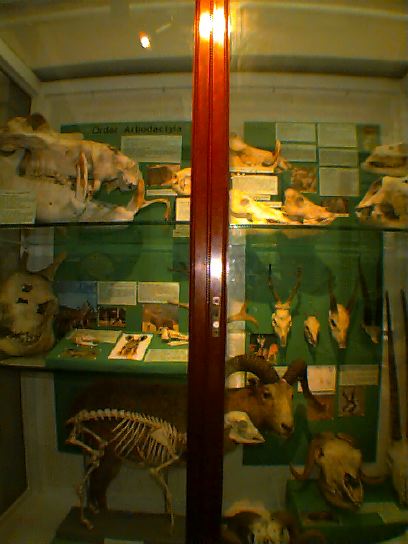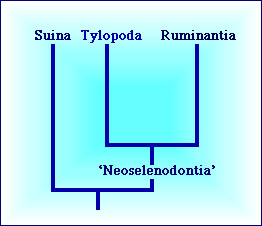
ORDER ARTIODACTYLA
This Order Artiodactyla is the most successful order of terrestrial ungulates today. There are 3 suborders: Suborder Suina : pigs, peccaries & hippopotami: primitive artiodactyls. Suborder Tylopoda : camels & llamas: intermediate artiodactyls. Suborder Ruminantia : cattle, antelopes, deer and giraffes: advanced artiodactyls.
Artiodactyls are united by several features:
The Artiodactyla did not undergo a major adaptive radiation until the end of the Eocene epoch, some 35 million years ago, even though the first artiodactyls appeared some 20 million years earlier. The three suborders had all separated by the early Oligocene. The Phylogeny of the Artiodactyla : The three suborders are related as shown below. The suborders Tylopoda and Ruminantia are more closely related to each other than to the Suina, and this is reflected in their being grouped together under the name 'Neoselenodontia'. The tylopods were formerly included in the Ruminantia.
|








